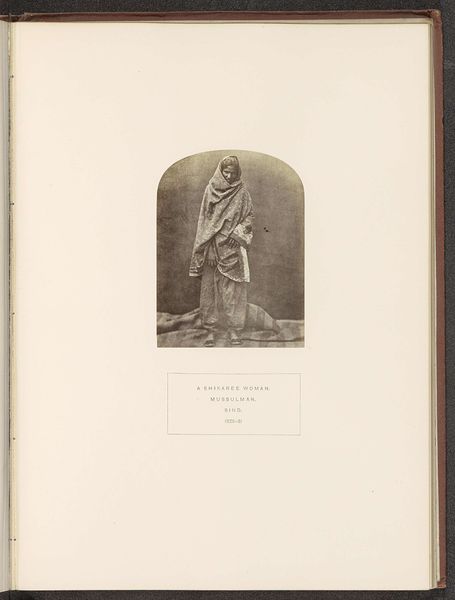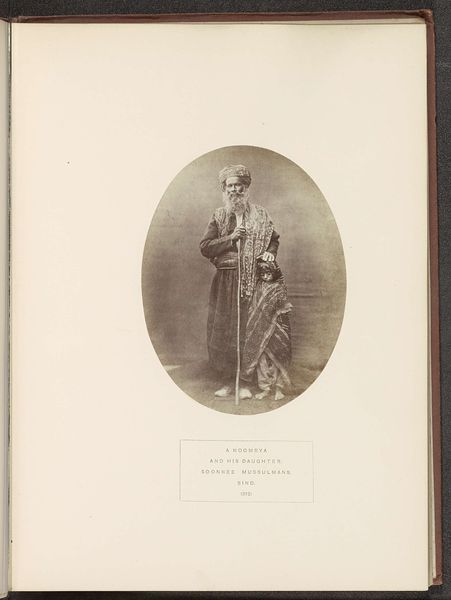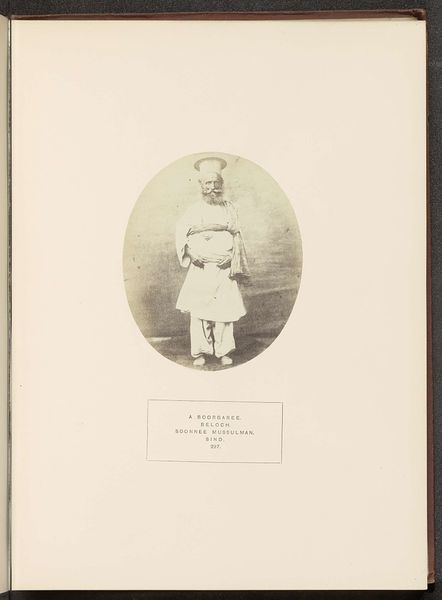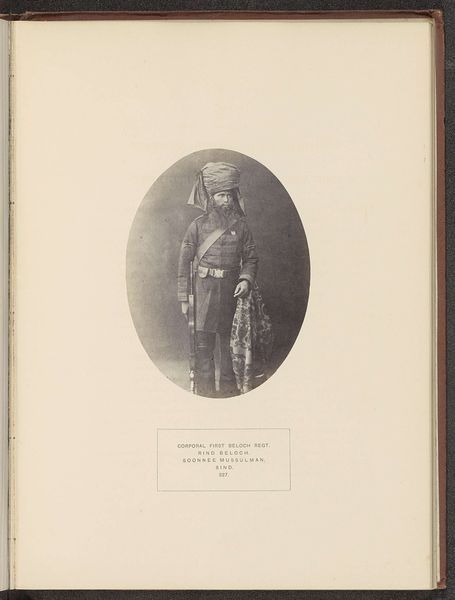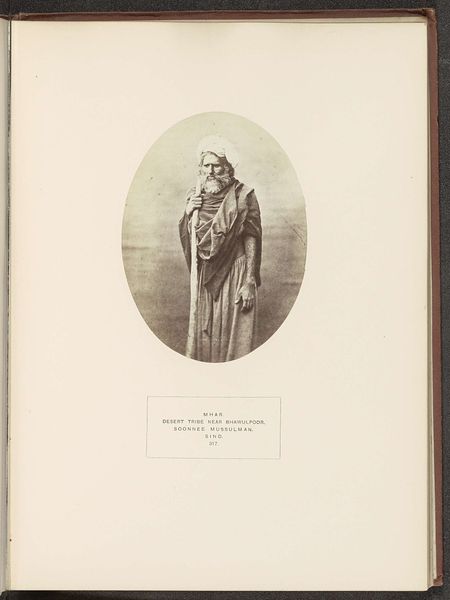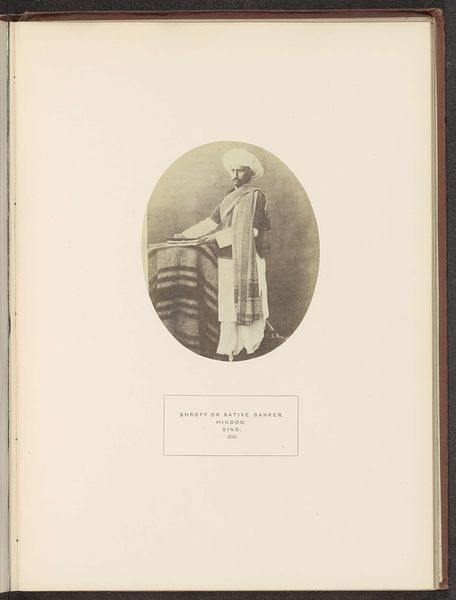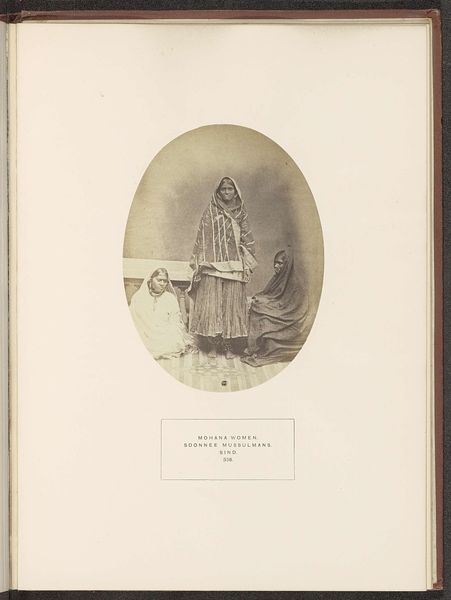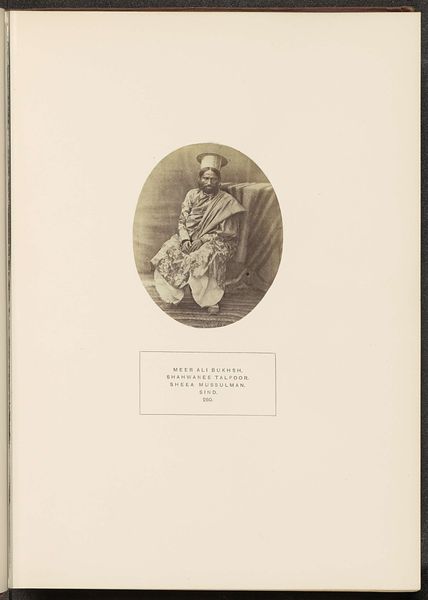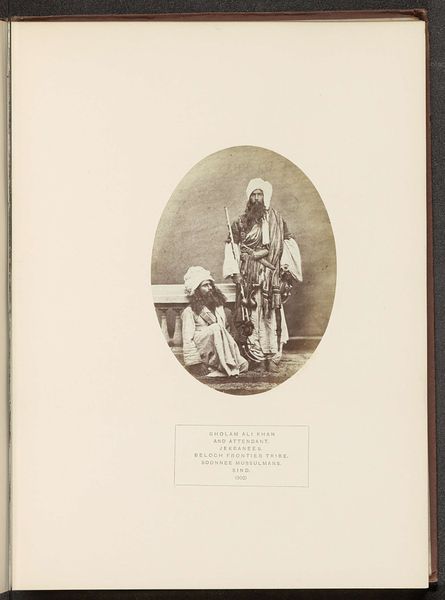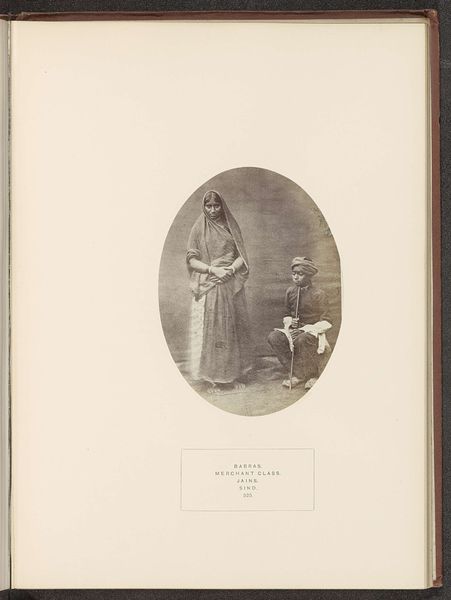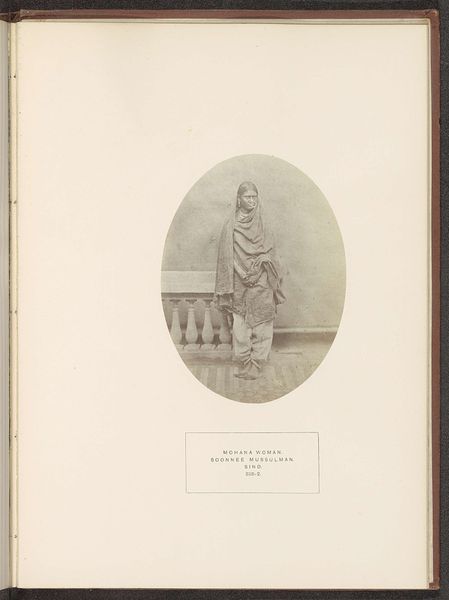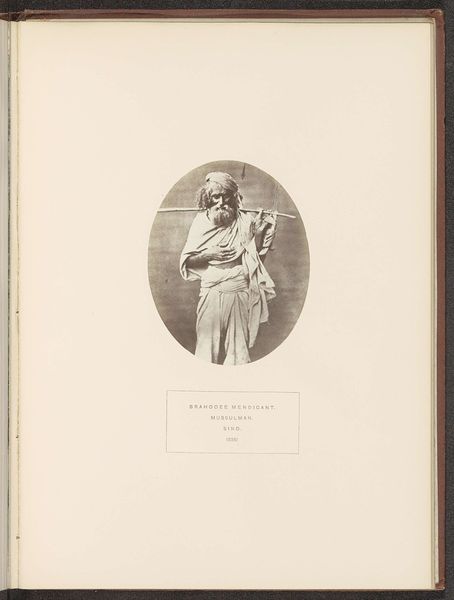
Portret van Sabir Ali Shah, een man die in het gemeentebestuur zat van Thatta before 1872
0:00
0:00
#
pencil drawn
#
light pencil work
#
pencil sketch
#
old engraving style
#
hand drawn type
#
personal sketchbook
#
hand-drawn typeface
#
pen-ink sketch
#
thick font
#
historical font
Dimensions: height 146 mm, width 108 mm
Copyright: Rijks Museum: Open Domain
Curator: Look at this amazing portrait by Henry Charles Baskerville Tanner, created sometime before 1872. It depicts Sabir Ali Shah, who served in the municipal administration of Thatta. It's quite striking. Editor: Immediately, I’m drawn to the contrasting textures. The smooth, almost photographic quality of the face juxtaposed with the more roughly sketched garments. There’s a formality mixed with something raw and immediate. Curator: Exactly! Tanner's handling of light and shadow gives the subject such presence. You feel like you’re looking into his very soul, but what makes it even more astonishing is that this was all done in pencil. Editor: Pencil, yes, but notice how the composition itself is an oval within a rectangle, creating an immediate formal structure. Then you have the repetition of vertical lines—in his hat, his robe, even subtly in the shawl across his chest—lending the figure a grounded sense of stability. Curator: Absolutely. There's something deeply empathetic in Tanner's depiction. It transcends mere portraiture, it captures the man himself, almost an eagerness to let his essence out. Editor: It also intrigues me how the artist has presented Sabir Ali Shah with almost no contextual background. Instead, the emphasis rests entirely on the inherent qualities of form, surface, and texture—a powerful demonstration of artistic choice. I wonder if we read this differently in the colonial context for which the drawing was created. Curator: That adds a great dimension of understanding, knowing where the work was created and what it represented at that specific period. Still, Tanner's respect for his subject comes through. Editor: Indeed. Focusing purely on form lets us approach the portrait with a kind of openness, an invitation to encounter the subject anew without the burden of specific historical narratives. It’s a minimalist but rather eloquent dialogue between line and identity. Curator: For me, this work evokes a silent dialogue across time, one filled with curiosity and mutual respect. A remarkable find. Editor: A superb piece, deftly capturing not just likeness, but hinting at complex social and art-historical structures, all while elegantly executed in simple pencil strokes.
Comments
No comments
Be the first to comment and join the conversation on the ultimate creative platform.
